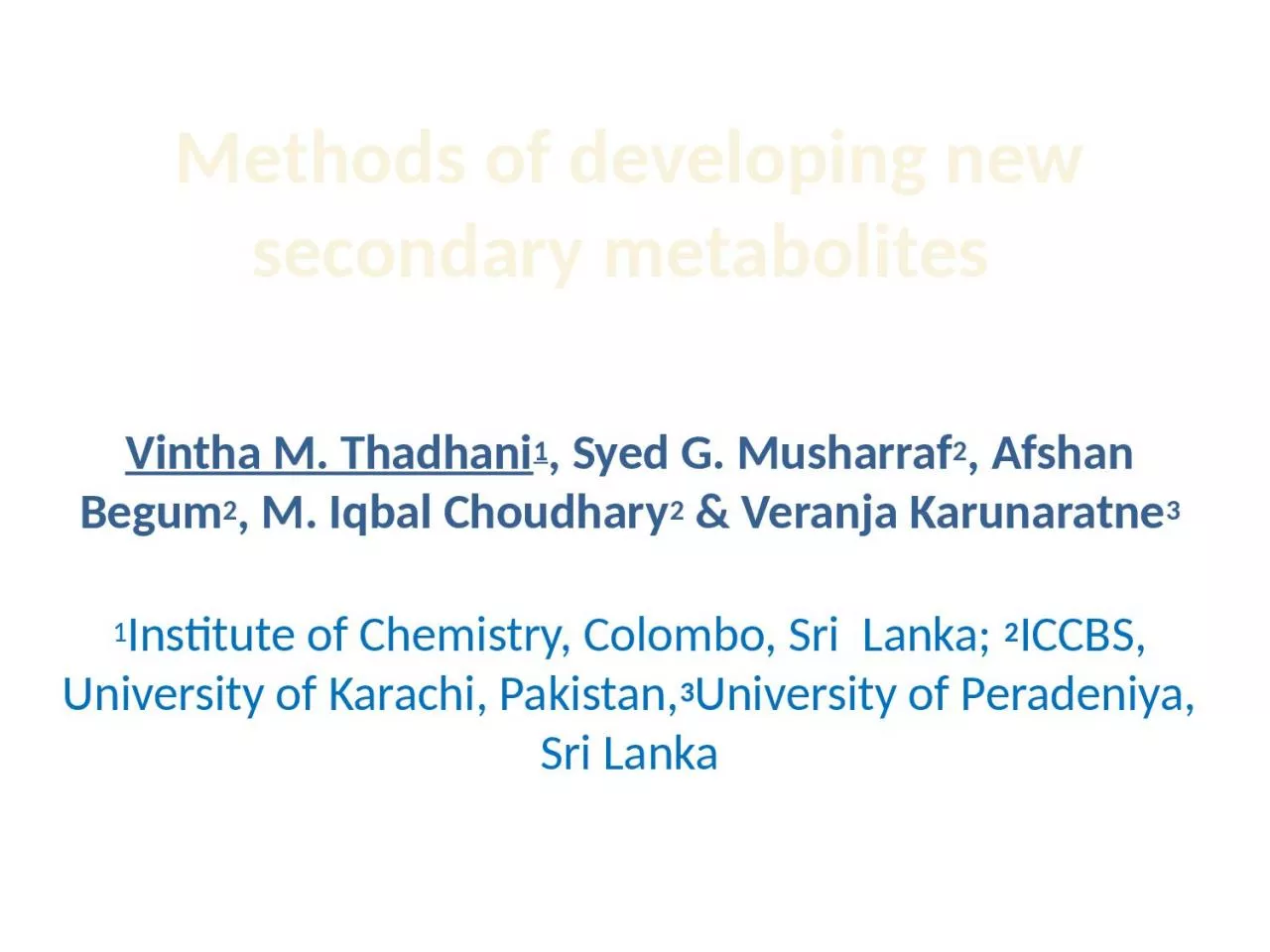

metabolites Vintha M Thadhani 1 Syed G Musharraf 2 Afshan Begum 2 M Iqbal Choudhary 2 amp Veranja Karunaratne 3 1 Institute of Chemistry Colombo Sri Lanka ID: 1034371
Download Presentation The PPT/PDF document "Methods of developing new secondary" is the property of its rightful owner. Permission is granted to download and print the materials on this web site for personal, non-commercial use only, and to display it on your personal computer provided you do not modify the materials and that you retain all copyright notices contained in the materials. By downloading content from our website, you accept the terms of this agreement.
1. Methods of developing new secondary metabolites Vintha M. Thadhani1, Syed G. Musharraf2, Afshan Begum2, M. Iqbal Choudhary2 & Veranja Karunaratne31Institute of Chemistry, Colombo, Sri Lanka; 2ICCBS, University of Karachi, Pakistan,3University of Peradeniya, Sri Lanka
2. LichensSymbiotic association of fungus & algaeWorldwide distribution Able to grow under extreme conditionsAbout 20,000 lichen species identified . Still many lichen rich areas remain unexploredTotal number may well be close to 100,000.
3. Secondary metabolites of lichensOccurs exclusively in these symbiotic organismsEven with the advances of analytical methods, there is comparatively less isolation of new lichen metabolites may be due to the limited biosynthetic pathways.Approximately only 1050 lichen metabolites have been isolated to date.
4. Polyketides- common classes of compounds reported from lichens
5. Secondary metabolites of lichens- Rich source of biologically active compounds We have already reported various biological activities of lichen compounds including, antioxidant, α-glucosidase inhibitory, urease inhibitory, antimicrobial, cytotoxicity etc
6. Common secondary metabolites of lichens
7. Biotransformation of major lichen metabolites-ZeorinZeorin isolated in 3.4% yield from Cladonia sp.Subjected to various bioassaysPatent obtained for α-glucosidase inhibitory activity.Biotransformation through Cumingharella elegansYielded 1,3-diacylglycerol & diacylperoxide.
8. 1,3-diacylglycerol1-(5-dodecenoyl), 3-(5-decanoyl)glycerol
9. Diacylperoxide 5-decenoic acid-1,1-diacylperoxide
10. Semisynthesis of minor metabolites
11. Complete synthesis of dibenzofurans-Reported
12. Depsides isolated in major quantities
13. Smiles rearrangement possible only with erythrin
14.
15. Analogues of 5-decarboxydibenzofurans
16. Formal synthesis of pannaric acid derivatives
17. Some natural analogues of dibenzofuran
18. ConclusionThis study reveals the possibility of conversion of major lichen specific secondary metabolites into new compounds through biotransformation and semi-synthesis.
19. Thank you